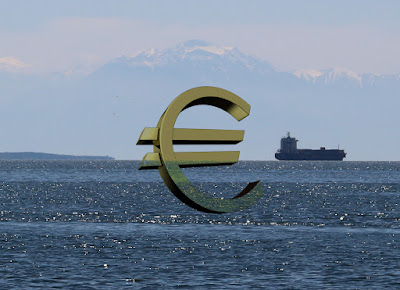Paul Samuelson
To celebrate my 100th post on this blog, what would be more appropriate than to write about the great economist Paul Samuelson who died last week?
2. Welfare economics: What does it mean to say that one economic outcome is better than another? This was a blurry concept before Samuelson came in, with much confusion about how to think about income distribution. Samuelson taught us how to use the concept of redistribution by an ethical observer to make sense of the concept of social welfare – and thereby also taught us the limits of that concept in the real world, where there is no such observer and redistribution usually doesn’t happen.
Incredible, isn't it?
So what did Samuelson actually do? I could not write any better than Paul Krugman, who was a fellow economist at MIT (they actually shared the same desk at one point), and who describes in his NYT blog what his great contributions to economic science have been:
"1. Revealed preference: There was a revolution in consumer theory in the 1930s, as economists realized that there was much more to consumer choice than diminishing marginal utility. But it was Samuelson who taught us how much can be inferred from the simple proposition that what people choose must be something they prefer to something else they could have afforded but don’t choose.
2. Welfare economics: What does it mean to say that one economic outcome is better than another? This was a blurry concept before Samuelson came in, with much confusion about how to think about income distribution. Samuelson taught us how to use the concept of redistribution by an ethical observer to make sense of the concept of social welfare – and thereby also taught us the limits of that concept in the real world, where there is no such observer and redistribution usually doesn’t happen.
3. Gains from trade: What does it mean to say that international trade is beneficial? What are the limits of that proposition? The starting point is Samuelson’s analysis of the gains from trade, which drew on both revealed preference and his welfare analysis. And everything since, from the distortions analysis of Bhagwati and Johnson, to the generalized comparative advantage concepts of Deardorff, has been based on that insight.
4. Public goods: Why must some goods and services be provided by the government? What makes some, but only some, goods suitable for private markets? It all goes back to Samuelson’s 1954 “Pure theory of public expenditure”.
5. Factor-proportions trade theory: Every time we talk about resources and comparative advantage, every time we worry about the effect of trade on income distribution, we’re harking back to Samuelson’s work in the 1940s and 1950s: he took the vague, confusing ideas of Ohlin and Heckscher, and turned them into a sharp-edged model that defined most trade theory for a generation, and remains a key part of the modern synthesis.
6. Exchange rates and the balance of payments: A bit of personal storytelling: Most people who work in international trade tend to lose the thread when the discussion turns to exchange rates and the balance of payments; as I’ve sometimes put it, the real trade people regard international macro as voodoo, while the international macro people regard real trade as boring and irrelevant (and when I’m in a sour mood, I suggest that both are right). But I was saved from all that when I read Dornbusch, Fischer and Samuelson 1977 on Ricardian trade, which among other things showed how trade and macro, exchange rates and the balance of payments, the possibility of gains from trade but also the possibility of unemployment, all fit together.
What I learned later was that Samuelson grasped these issues much earlier, although the neatness of the DFS formulation surely helped get them across. Here’s what he wrote in his 1964 paper “Theoretical notes on trade problems”: “With employment less than full and Net National Product suboptimal, all the debunked mercantilist arguments turn out to be valid.” And he went on to mention the appendix to the latest edition of his Economics, “pointing out the genuine problems for free-trade apologetics raised by overvaluation”. The solution, of course, was to end the overvaluation rather than restrict trade; Samuelson understood that good macroeconomic policies are a prerequisite for good microeconomic policies. More on that in a minute.
7. Overlapping generations: Samuelson’s 1958 overlapping-generations model of borrowing and lending is the ur-framework for thinking about everything from Social Security to household debt. It’s hard to imagine macro without it.
8. Random-walk finance: Samuelson’s demonstration that forward-looking investors imply randomly fluctuation prices is the starting point for much of modern finance."
Incredible, isn't it?


Comments
Post a Comment